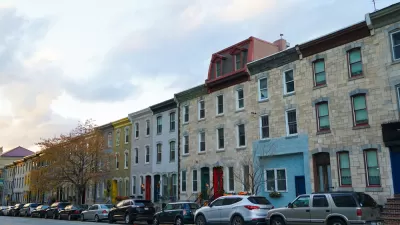By requiring landlords to enter mediation before filing eviction cases, the city’s eviction diversion program has successfully kept thousands of people at risk for displacement in their homes.

Philadelphia’s Eviction Diversion Program (EDP), which assists tenants at risk of eviction, could prove to be a successful model for other cities, writes Jessica Blatt in an article for the Philadelphia Citizen, republished in Next City.
By steering tenants away from eviction proceedings — a process in which less than 10 percent of tenants, compared with more than 80 percent of landlords, have historically had legal representation — Philadelphia’s program allows renters to avoid significant damage to their credit and their ability to secure desirable housing in the future.
The EDP began as part of the city’s effort to address the 17 recommendations provided in the 2018 Taskforce on Eviction Prevention and Response report, which included legally requiring landlords to enter mediation before filing an eviction. The program gained steam during the pandemic, when officials worried “the backlog of eviction cases would turn into an avalanche of people losing their homes.”
The program has had “a significant impact” on evictions in the city, with 85 percent of potential eviction cases now avoiding court proceedings and wait times for hearings reduced by two thirds. See the source article for more details on the program.
FULL STORY: How Philly’s Eviction Diversion Program Became A Model For Cities Around The U.S.

Study: Maui’s Plan to Convert Vacation Rentals to Long-Term Housing Could Cause Nearly $1 Billion Economic Loss
The plan would reduce visitor accommodation by 25,% resulting in 1,900 jobs lost.

Alabama: Trump Terminates Settlements for Black Communities Harmed By Raw Sewage
Trump deemed the landmark civil rights agreement “illegal DEI and environmental justice policy.”

Why Should We Subsidize Public Transportation?
Many public transit agencies face financial stress due to rising costs, declining fare revenue, and declining subsidies. Transit advocates must provide a strong business case for increasing public transit funding.

Paris Bike Boom Leads to Steep Drop in Air Pollution
The French city’s air quality has improved dramatically in the past 20 years, coinciding with a growth in cycling.

Why Housing Costs More to Build in California Than in Texas
Hard costs like labor and materials combined with ‘soft’ costs such as permitting make building in the San Francisco Bay Area almost three times as costly as in Texas cities.

San Diego County Sees a Rise in Urban Coyotes
San Diego County experiences a rise in urban coyotes, as sightings become prevalent throughout its urban neighbourhoods and surrounding areas.
Urban Design for Planners 1: Software Tools
This six-course series explores essential urban design concepts using open source software and equips planners with the tools they need to participate fully in the urban design process.
Planning for Universal Design
Learn the tools for implementing Universal Design in planning regulations.
Smith Gee Studio
Alamo Area Metropolitan Planning Organization
City of Santa Clarita
Institute for Housing and Urban Development Studies (IHS)
City of Grandview
Harvard GSD Executive Education
Toledo-Lucas County Plan Commissions
Salt Lake City
NYU Wagner Graduate School of Public Service





























